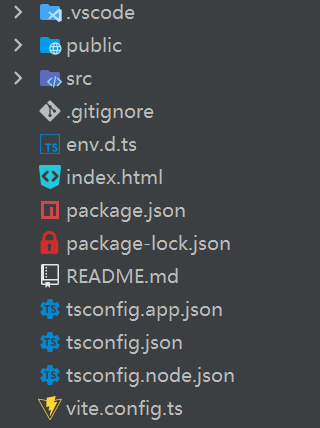![]()
开始
通过 Vite 创建 Vue 项目,命令为 npm create vue@latest,再运行 npm i 安装依赖
项目目录结构
- public:存放项目公共资源
- src:源代码目录
env.d.ts:ts 环境文件,识别项目中的文件index.html:项目入口package.json:依赖管理文件tsconfig.app.json、tsconfig.json、tsconfig.node.json:ts 配置文件vite.config.ts:项目配置文件
App 组件
App.vue 是项目的根组件,在 main.ts 中实现将组件挂载到 index.html 的元素
index.html 中包含一个 id 为 app 的 div 元素
1
2
3
4
| <body>
<div id="app"></div>
<script type="module" src="/src/main.ts"></script>
</body>
|
在 main.ts 中将 App 组件挂载到 app 元素上
1
2
3
4
5
6
| import './assets/main.css'
import { createApp } from 'vue'
import App from './App.vue'
createApp(App).mount('#app')
|
单文件组件
Vue 的单文件组件是指在一个文件中编写一个组件,文件后缀为 .vue,该文件中封装了组件的 HTML、CSS 和 JavaScript 代码
单文件组件的基本结构
1
2
3
4
5
6
7
8
9
10
11
| <template>
<!--编写HTML-->
</template>
<script>
// 编写JavaScript
</script>
<style scoped>
/* 编写CSS */
</style>
|
选项式 API 与组合式 API
选项式 API 使用一个对象来描述组件,通过定义对象中的特定名称的方法来配置组件的逻辑
1
2
3
4
5
6
7
8
9
10
11
12
13
14
15
16
17
18
19
20
21
22
23
24
25
26
27
| <script>
// 默认导出一个对象,代表组件实例
export default {
// 配置状态
data() {
return {
count: 0
}
},
// 配置方法修改状态
methods: {
increment() {
this.count++
}
},
// 生命周期回调
mounted() {
console.log(`The initial count is ${this.count}.`)
}
}
</script>
<template>
<button @click="increment">Count is: {{ count }}</button>
</template>
|
组合式 API 使用导入的 API 函数来描述组件逻辑,将相关的逻辑放在一起,更易于维护
1
2
3
4
5
6
7
8
9
10
11
12
13
14
15
16
17
18
19
20
| <script setup>
import { ref, onMounted } from 'vue'
// 定义状态
const count = ref(0)
// 用来修改状态、触发更新的函数
function increment() {
count.value++
}
// 生命周期钩子
onMounted(() => {
console.log(`The initial count is ${count.value}.`)
})
</script>
<template>
<button @click="increment">Count is: {{ count }}</button>
</template>
|
